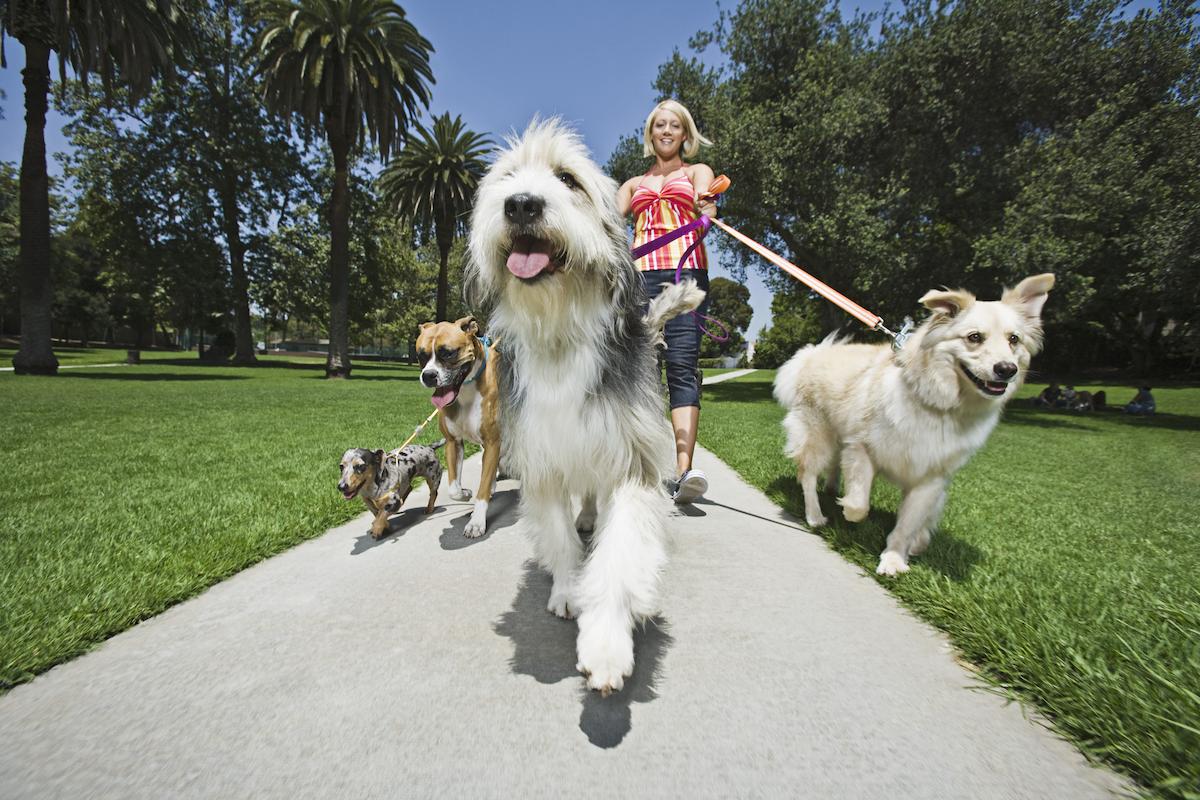In 2020, for the first time, many animal shelters found themselves empty.
As many Americans found themselves working and going to school from home, more and more people decided to become pet parents. With many workers now returning to the office and campus, the need for professional dog walkers is on the rise. The U.S. Bureau of Labor Statistics also expects animal care and service to grow 33{6c4f10cab50a46b63425e915a3b32a252b20e15cfb3b21d076e7c5437b6ee37b} by 2030.
Becoming a pet-sitting professional can be a rewarding career choice for pet lovers. Read on to learn what to know before you start a dog walking business.
FAQs About Starting a Dog Walking Business
If you are just starting to think about starting your own business, you likely have many questions. You are not alone! It’s so important to consider all aspects before becoming a business owner.
What are some skills and experiences that will help you build a successful dog walking business?
The most obvious is that you are an animal lover at heart. Many pet parents consider their fur babies to be a child. Just as they seek out the best babysitter or daycare provider, they want the best caretaker for their dogs as well.
In addition to getting along with animals, you also need to be able to communicate well with humans. Communication skills and compassion are a must, as is patience. It may take time to build trust with your new clients. That goes for both the dog owners and the dogs.
A dog walker needs to control the animal and handle any problematic situations that may arise while out and about. If you have a dog of your own, you already know it’s not just your dog you need to worry about when out on a walk. You may encounter other dogs that aren’t so well behaved. There will also be distractions and potentially dangerous situations. Therefore, a pet sitter must be physically strong enough to handle these situations and mentally sharp and a quick problem solver.
While no formal training is required to become a dog walker, it may benefit you to learn canine first aid and basic behavior skills. This will be a plus when it comes to marketing to new clientele.
You should also be reliable and have good time management skills. Maintaining a schedule is so important to pets. And no pet owner wants to come home to a mess because their pet sitter didn’t show up. Just like the postal worker needs to deliver mail in rain or sleet or snow, a dog walker needs to walk that dog.
What happens during a typical day at a dog walking business?
As a dog walker, you will likely make a trip to each client’s home at least once per day to take their dog for walk and give it some playtime. This visit typically takes place during the middle of the day after the pet has been home for a few hours and is ready for a bathroom break. If your client is away for an extended period of time or the pet requires more frequent attention, that may require more than one trip.
While at your client’s home, you may also need to check the pet’s food and water and let the owner or veterinarian know if there is anything wrong with the dog.
How Much Should You Charge for Dog Walking?
How much you can earn for dog walking will largely depend on your location and clientele. According to Glassdoor, an average salary for a dog walker is about $35,000 per year. When calculating your rates, don’t forget to include your expenses, such as gas and vehicle wear-and-tear traveling to and from clients’ homes. You may want to provide your own dog products and treats or waste disposal bags. There may be insurance or licensing expenses to consider as well.
Most dog walkers report charging $10 to $20 per walk. Your prices may also vary if you are walking multiple dogs at once or every dog is getting individual attention.
Licenses and Insurance Needed for a Serious Dog Walking Business
The licenses you will need to start a dog walking or pet sitting business will be dictated by your location. It’s always best to consult a professional who knows the ins and outs of starting a home-based business. SCORE offers many free resources, including volunteer business mentors that can help make sure you have your Ts crossed and your Is dotted.
They can also advise you as to the types of insurance you should consider, such as dog walking insurance and personal or commercial property insurance.
You will also want to consider your business structure, which is how the business is organized to operate. The sole proprietorship is most common, but a Limited Liability Company (LLC) may be worth looking into as it protects your personal assets in case somebody sues the business.
How to Find Dog Walking Clients
Once you have a business plan in place and know the type of clients — both dogs and humans — you would like to work with, it’s time to get the word out. The good news is that marketing this type of service business doesn’t have to cost a lot of money if any at all.
You may want to reach out to family, friends and colleagues to get a few good reviews under your belt. These people can also refer you to others if they feel you can do a good job. Never be afraid to ask customers for referrals. This is the most powerful form of marketing. You may even choose to offer them an incentive, for example, a free dog walk, should their referral sign a long-term contract with you.
You may also want to build a simple website introducing yourself and your business that you can easily point people to via social media posts, business cards, and flyers.
You can also pad your schedule as you get started with a dog walking app like Rover or Wag! This dog walking software can help you locally connect with those in need of your pet care services.
Growth Potential for a Dog Walking Business
There are only so many hours in a day and the window for midday walks can be short. Therefore, you may want to consider other income opportunities for your successful dog walking business.
Other services you may be interested in offering include:
- Overnight and weekend stays when the dog owner is out of town
- Basic canine training
- Housesitting
- Boarding in your home
- Pooper scooper services
- Pet taxi service
The Bottom Line
It’s always in your best interest to consider alternative avenues of income and have a backup plan. When the pandemic hit, many of those walking dogs for a living found themselves with no work for several months as pet parents were confined to their homes and not in need of dog walking service. Our current and future landscape is still a little shaky. Make sure you are saving your pennies for a rainy day and always have a Plan B.










